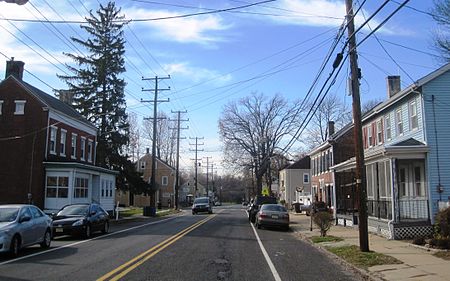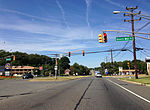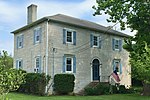Fieldsboro, New Jersey

Fieldsboro is a borough in Burlington County, in the U.S. state of New Jersey. As of the 2020 United States census, the borough's population was 526, a decrease of 14 (−2.6%) from the 2010 census count of 540, which in turn reflected an increase of 18 (+3.4%) from the 522 counted in the 2000 census. The borough, and all of Burlington County, is a part of the Philadelphia-Reading-Camden combined statistical area and the Delaware Valley.Fieldsboro was incorporated as a borough by an act of the New Jersey Legislature as Fieldsborough on March 7, 1850, within portions of Mansfield Township. It separated from Bordentown Township as an independent municipality c. 1894. The borough was named for the Field family, prominent early settlers in the area.
Excerpt from the Wikipedia article Fieldsboro, New Jersey (License: CC BY-SA 3.0, Authors, Images).Fieldsboro, New Jersey
Delaware Avenue,
Geographical coordinates (GPS) Address Nearby Places Show on map
Geographical coordinates (GPS)
| Latitude | Longitude |
|---|---|
| N 40.135471 ° | E -74.733355 ° |
Address
White Hill Mansion
Delaware Avenue
08505
New Jersey, United States
Open on Google Maps






